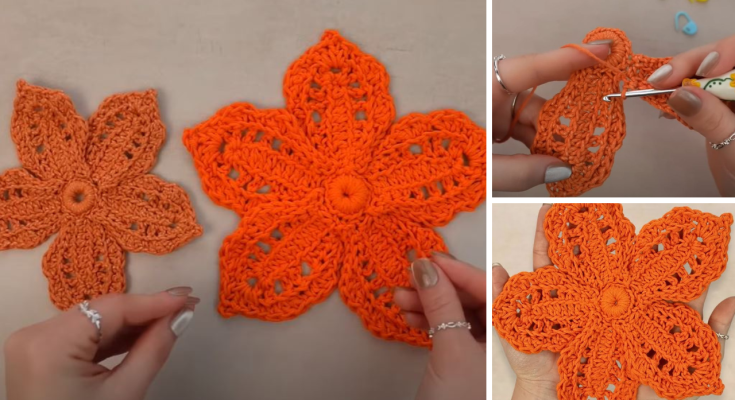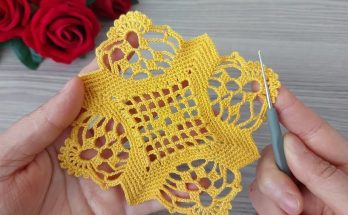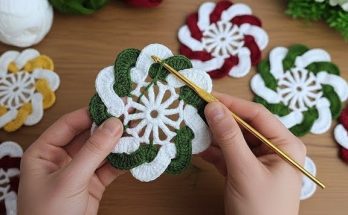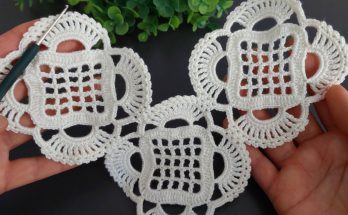Irish crochet lace is one of the most intricate and beautiful forms of needlework in the world. Its origins are steeped in history and resilience, having served not just as a decorative art, but as a means of survival for many Irish families in the 19th century. One of its most iconic and elegant motifs is the lace flower, often used in garments, accessories, and home décor.
In this article, we will explore the art of crafting a Large Irish Crochet Lace Flower — from understanding its heritage to step-by-step instructions and creative ways to use your finished work. Whether you’re a novice crocheter curious about lace or a seasoned fiber artist, this guide will walk you through every detail.
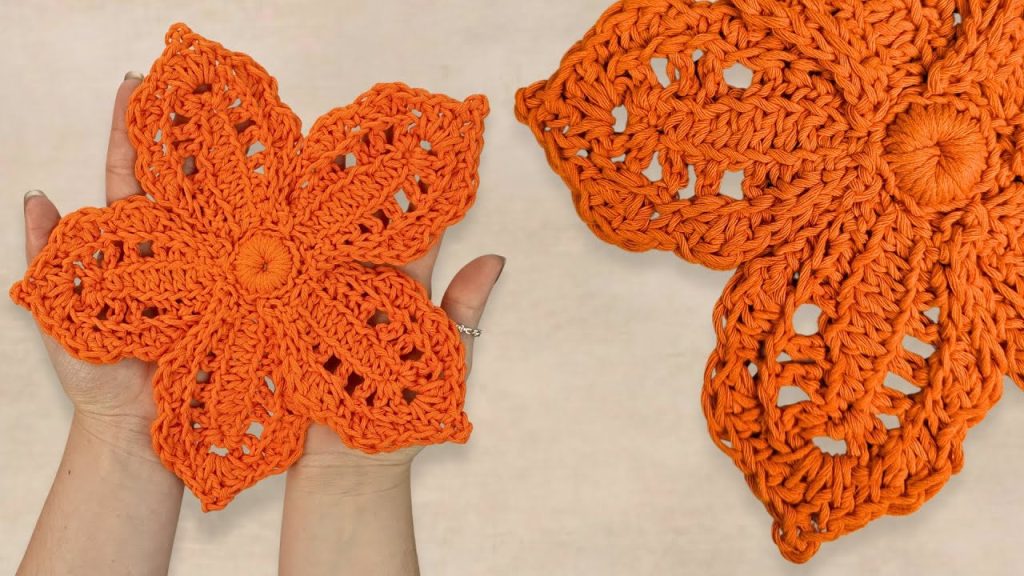
🇮🇪 A Brief History of Irish Crochet Lace
Irish crochet lace was born in the early 1800s, inspired by Venetian needle lace. As famine swept through Ireland in the mid-19th century, crochet lace became a vital cottage industry. Women and children learned to make lace motifs—like roses, leaves, and grapes—that were later assembled into collars, cuffs, and gowns sold abroad.
What made Irish crochet special was its three-dimensional motifs, often built with padding cords to add structure and depth. Flowers were among the most popular and prominent motifs, symbolizing nature, beauty, and continuity.
🌼 What Makes a Large Irish Crochet Lace Flower Special?
Unlike flat, simple motifs, Irish crochet flowers are layered, textured, and dimensional. A large lace flower can serve as a centerpiece for a doily, be sewn onto garments like shawls or gowns, or even stand alone as a brooch or hair accessory.
Key characteristics of a large Irish crochet lace flower:
- Multi-layered petals
- Raised or corded outlines
- Central padded core or stamen
- Intricate picots or scalloped edges
- Use of fine cotton thread and steel hooks
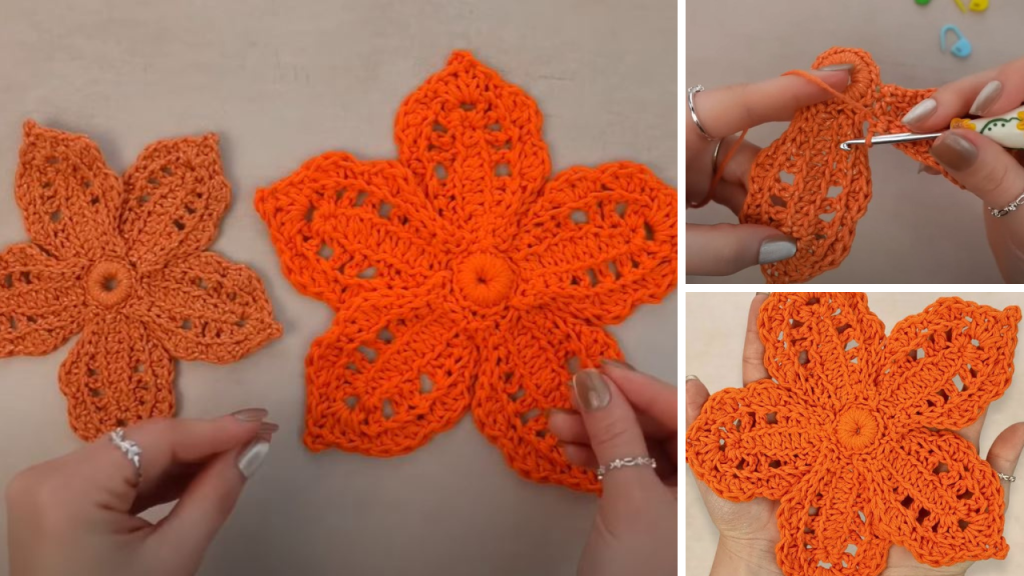
🧶 Materials You’ll Need
To make a traditional large Irish crochet flower, prepare the following:
- Cotton crochet thread (size 10 or finer for delicate lace)
- Steel crochet hook (sizes 0.75 mm to 1.25 mm, depending on thread)
- Padding cord (a slightly thicker cotton thread or embroidery floss)
- Scissors
- Tapestry needle (for weaving in ends)
- Blocking board and pins (for shaping)
Optional:
- Beads or pearls for embellishment
- Spray starch or fabric stiffener
🧵 Essential Techniques in Irish Crochet
Familiarity with the following stitches will help:
- Chain stitch (ch)
- Slip stitch (sl st)
- Single crochet (sc)
- Double crochet (dc)
- Treble crochet (tr)
- Picot
- Working over padding cord
- Crocheting in rounds
Padding cords are essential in Irish crochet, providing structure and relief. They are held in place and crocheted over as you form the motif.
✨ Step-by-Step Pattern: Large Irish Crochet Lace Flower
Here’s a classic 3-layer lace flower pattern with 3D petals and a textured center.
✅ Size: 3.5–5 inches (depending on thread and hook)
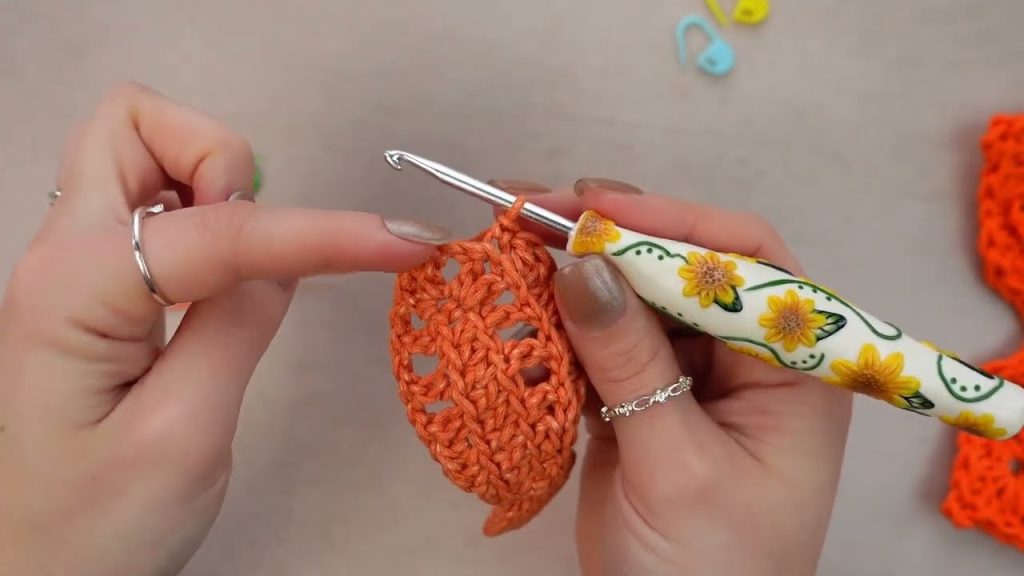
🔸 Center (Stamen or Core)
- Make a magic ring, ch 1.
- Work 12 sc into the ring, pull tight, and join with a sl st. (12 sts)
- Optional: For texture, add a second round of front-post sc (fpsc) into each stitch.
You now have a sturdy base for your petals.
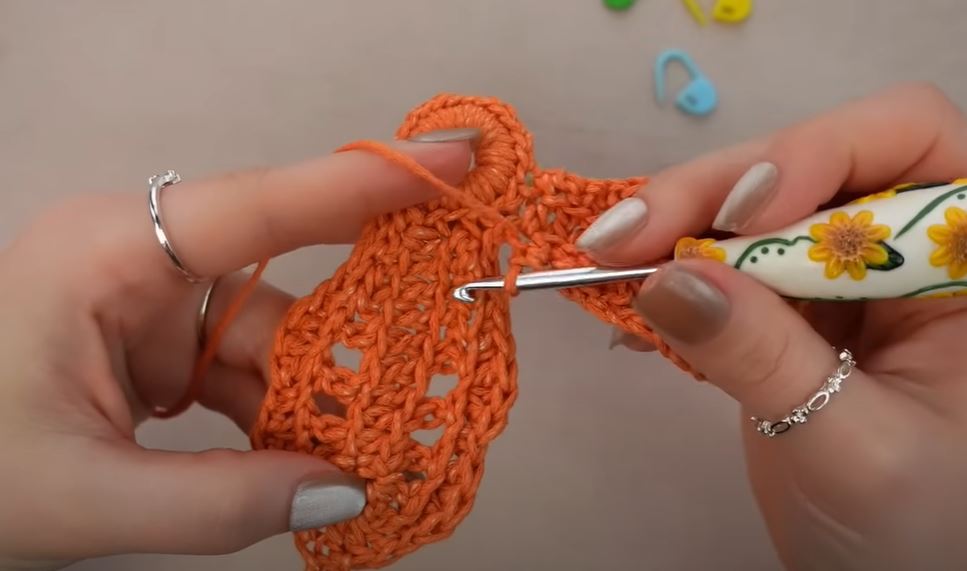
🔸 First Layer of Petals (Inner Circle)
- Ch 3, skip 1 st, sc in next st, ch 3, repeat around. (6 ch-3 loops)
- Into each ch-3 loop:
- (sc, hdc, dc, tr, dc, hdc, sc) — this forms a small petal.
- Join with sl st. You now have 6 small petals.
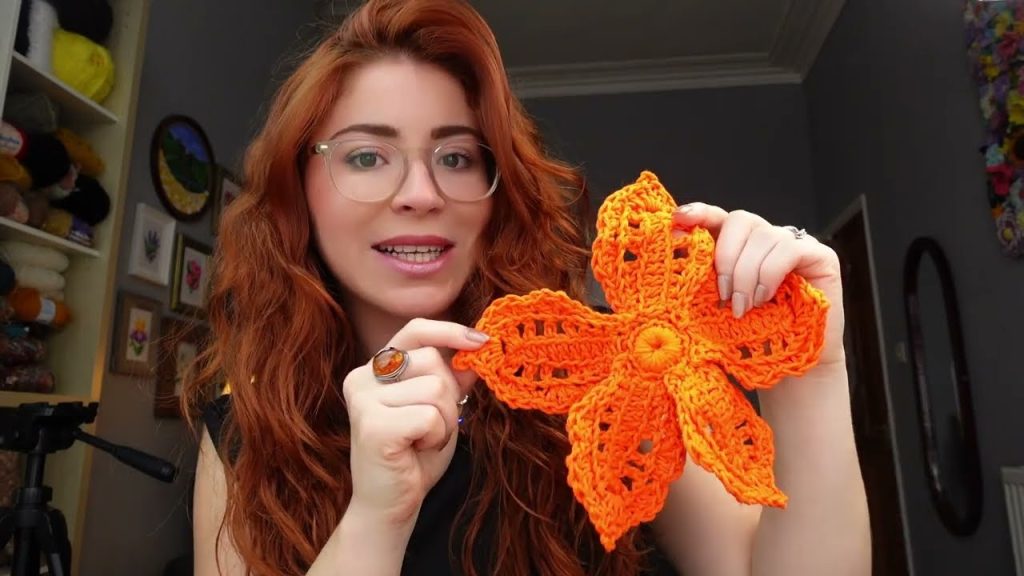
🔸 Second Layer of Petals (Middle Layer)
- Turn your work to the back.
- Insert hook behind the base of each petal, and ch 4, sl st into space behind next petal to form a back loop. (6 back loops)
- Into each loop:
- (sc, hdc, dc, 2 tr, dc, hdc, sc) — slightly larger petal.
- Join with sl st.
You now have a second, larger layer of petals sitting behind the first.
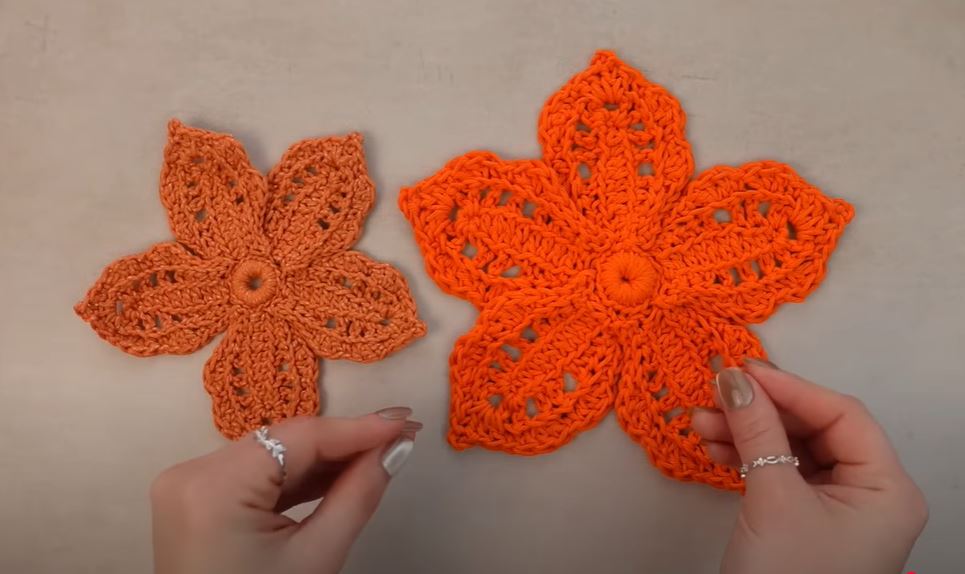
🔸 Third Layer of Petals (Outer Layer)
- Again, create back loops behind the second layer by ch 5, sl st behind each petal base. (6 loops)
- Into each loop:
- (sc, hdc, dc, 3 tr, dc, hdc, sc) — larger, open petal.
- Add a picot on the middle tr stitch for elegance:
- (sc, hdc, dc, tr, picot, tr, dc, hdc, sc)
Optional: work with a padding cord under each stitch to give raised definition.
🔸 Finishing
- Fasten off and weave in ends carefully with a tapestry needle.
- Pin the flower to a blocking board, shape each petal neatly, and steam or spray starch.
- Let dry completely.
You now have a 3D Irish crochet lace flower, perfect for embellishment or as a statement piece.
💡 Creative Variations
There are endless ways to customize your large Irish crochet lace flower:
🌈 Color Changes
- Use gradient threads or different colors for each layer of petals.
- Add a gold or metallic thread for edging.
🌟 Beaded Center
- Sew beads or pearls in the center to mimic stamens.
- Use seed beads along the edges of petals for sparkle.
🧵 Texture Play
- Use a finer thread for inner petals and a thicker one for outer petals.
- Combine with mesh lace background for framed art or table runners.
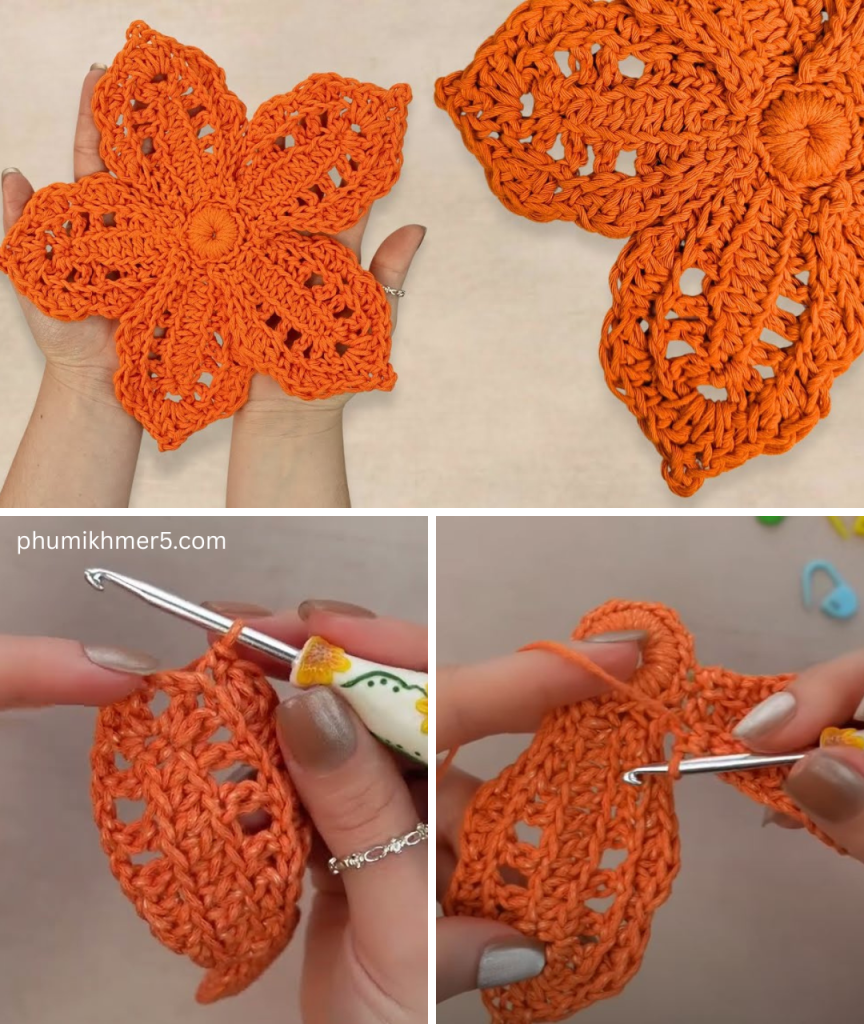
👜 Where to Use Irish Crochet Lace Flowers
Here are some beautiful and practical applications for your large flower motif:
- On garments: Attach to blouses, dresses, or shawls
- As brooches: Sew a pin to the back and wear it
- Hair accessories: Glue or sew onto a headband or hair clip
- Home décor: Mount in a hoop or frame for wall art
- Bridal embellishments: Add to veils, sashes, or gloves
🧺 Care Tips for Irish Crochet Lace
Since Irish lace is made with fine cotton threads, it’s important to handle it with care:
- Hand wash in lukewarm water with mild soap
- Do not wring; press gently in a towel
- Lay flat and reshape with pins while drying
- Store in a cool, dry place away from sunlight

🧣 Final Thoughts
Creating a Large Irish Crochet Lace Flower is more than a craft — it’s a celebration of tradition, art, and intricate beauty. Though it may seem daunting at first, working slowly and attentively will allow you to master the rhythm and structure of the stitches. The end result is a stunning, textured flower with elegance and history in every loop.
Once you’ve completed one, you’ll find yourself reaching for your hook again — eager to make more flowers, explore variations, and perhaps even join them into a complete lace garment or tablecloth.
Video tutorial:
